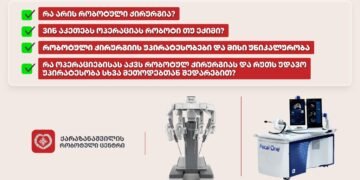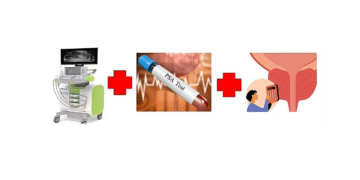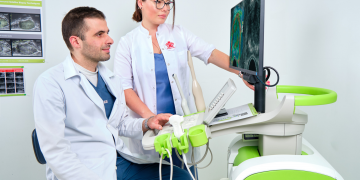Pros tate cancer breaks down into four main groups, very low grade, low grade, intermediate and high grade. Many low-grade prostate cancers do not need to be treated and patients can go on active surveillance, and it doesn’t affect overall survival or quality of life. However, for cancers that need treatment, rather than turning to the tried-and-true radiation and prostatectomy routes first, as we used to, we now look for less invasive approaches that allow patients to maintain their quality of life, and especially, their continence and erectile function.
tate cancer breaks down into four main groups, very low grade, low grade, intermediate and high grade. Many low-grade prostate cancers do not need to be treated and patients can go on active surveillance, and it doesn’t affect overall survival or quality of life. However, for cancers that need treatment, rather than turning to the tried-and-true radiation and prostatectomy routes first, as we used to, we now look for less invasive approaches that allow patients to maintain their quality of life, and especially, their continence and erectile function.
Focal therapies, like high intensity focused ultrasound (HIFU), have become the middle ground between active surveillance and more radical therapies like surgery or radiation. HIFU is for men whose cancer is localized, meaning it has not spread beyond the walls of the prostate, and whose doctors identify as good candidates. HIFU is used to burn away (ablate) the cancer without damaging the surrounding structures that control a man’s continence and erectile function.
HIFU has fewer side effects for patients than other focal therapies using energy sources including irreversible electroporation, cryotherapy, photodynamic therapy, focal laser ablation or laser interstitial thermotherapy, radiofrequency ablation, and focal brachytherapy.
When we do the HIFU procedure, we do not make any incisions. We can perform HIFU and retreat if needed, again with HIFU, or radiation or surgery if the cancer ever returns. Multiple studies have shown HIFU’s effectiveness over the last 10 years. Men are treated in an outpatient setting, leave the hospital, typically with a catheter, and are generally back to their lives within a week.
Selecting HIFU over other innovative focal therapies for prostate cancer
There are other focal options I have explored for treating prostate cancer, including cryotherapy and brachytherapy, but the targeting of the tumors is done through cognitive fusion, and that can be difficult.
With HIFU I can treat the tumor inside the MRI and deliver radiofrequency ablation. Another option is cryotherapy, but this often requires the patient to actually be inside the MRI machine and that can take up to 4 hours.
TULSA or Transurethral Ultrasound Ablation is a minimally invasive procedure that uses directional ultrasound to produce very high temperatures to ablate (destroy) targeted prostate tissue, similar to HIFU. However, the procedure is performed in an MRI suite and the probe goes into the urethra (versus the anus), which requires a cooling method. As most cancers are in the peripheral prostate, it makes more sense to treat transrectally, except when tumors are at the apex, then any focal therapy may have some issues reaching the tumor.
Focal One, the most advanced HIFU technology which fuses MRI imaging and biopsy data, gives me the precise location of the tumor and allows me to create a contour around it and easily direct the HIFU energy to ablate it. The patient is going to get better results when we target the tumor in real time. For some patients, rectal access to the prostate cancer causes less symptoms like burning and dysuria.
To be very frank, while the energy source we deliver, HIFU, cryo, microwave or RFA (radiofrequency ablation) is central to tissue destruction, the technology we use to deliver it may be even more important: to deliver precise, focused treatment exactly where you want it to go, avoiding injury to the nerves, blood vessels, urethra and rectum.
Urologists worry about any transrectal therapies, and the small risk of creating fistula tracks or other issues in the rectal wall. But the HIFU technology allows us to see where the rectal wall is by using a sensor to divert the ultrasound energy if we come too close. HIFU allows us to treat where we want and not where we don’t. I recall talking to my surgical oncology friend who uses HIFU for liver cancer because he can literally treat tissue that is next to the vena cava – the largest vein in the body — without injury.
HIFU’s legacy is being able to treat prostate cancer with minimal side effects
HIFU’s legacy is that now we’re able to treat prostate cancer with minimal side effects to the patient because we can specifically target the lesion and not treat any other tissue, nerves or arteries, or anything that’s in the vicinity of the prostate that’s going to affect the patient’s overall urinary function or erectile function. This makes a significant difference in the lives of the men we treat — and their partners—or future partners. We can’t underestimate the value of preserving their quality of life as we treat their cancer.
Jennifer Linehan, MD, is a board-certified urologist and director of Urology Translational Research and an associate professor of Urology and Urologic Oncology at the Saint John’s Cancer Institute. She also practices general urology, including both male and female voiding dysfunction and treatment for kidney stones.
source: https://www.urologytimes.com/







